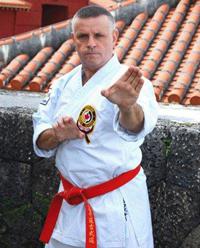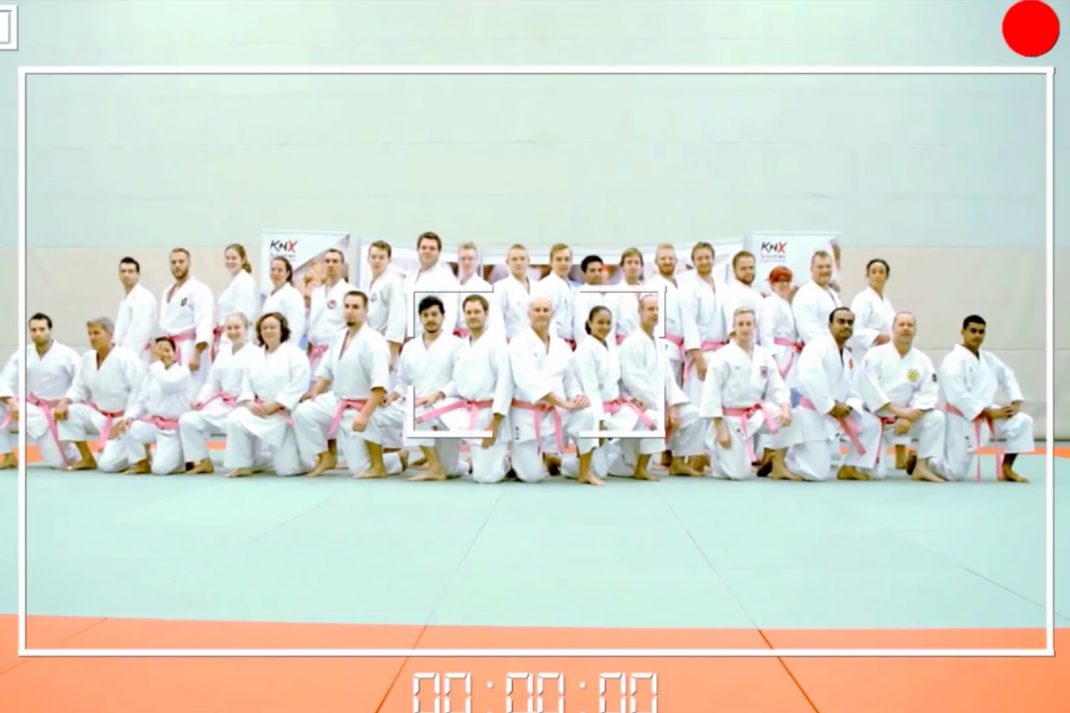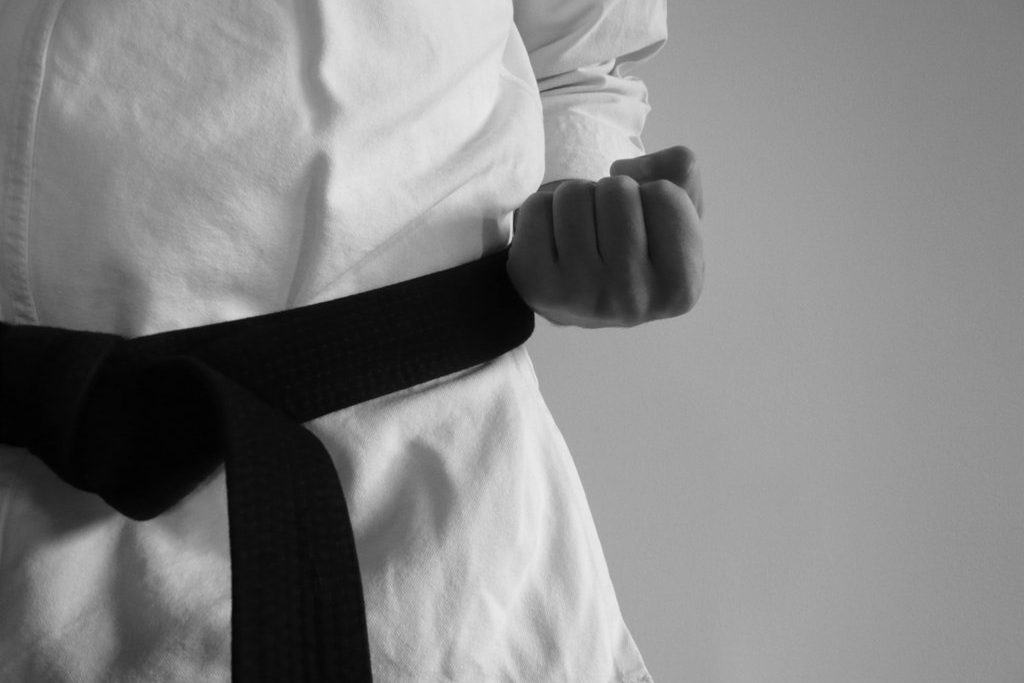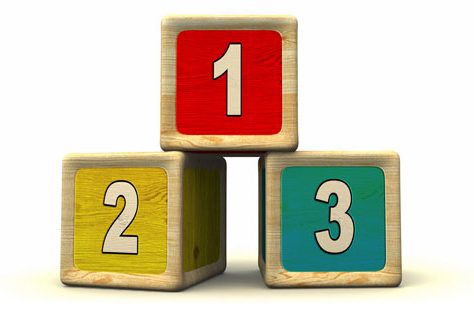You can’t deny it:
There’s something magical in seeing how other people interpret the way of Karate.
In fact, it’s more of a rule rather than an exception that whenever I interview elite Karate athletes, world-renowed Karate researchers or political Karate leaders; you’ll always learn something special from the obstacles and joys they share from their journey towards the summit of mount Karate.

And today’s guest, sensei Cezar Borkowski, is no exception to that rule.
Borkowski sensei, who’s authored popular books like The Complete Idiot’s Guide to Martial Arts and Modern Shotokan, is largely responsible for igniting 11 full-time dojos with nearly 9000 active students all around Canada, truly embodying the traditional Confucian sentiment of “in order to understand the future we must learn from the past” (“on-ko-chi-shin” in Japanese).
This becomes further evident when you consider the fact that Borkowski sensei put together his teaching system for Karate based not only upon his vast learnings from the plethora of traditional Karate masters he’s met during his intense travels throughout Japan, China, Okinawa and the rest of Asia, but also his journey into martial arts like MMA, FMA (Filipino Martial Arts) and kempo.
So here’s what I wanted to know:
How has Borkowski sensei managed to fuse traditional teachings with modern concepts to amass such a dedicated martial arts following?
Let’s find out together, as I pick his brain below in my exclusive interview with Cezar Borkowski – Canada’s Progressive Karate Pioneer.
Here we go:
J (Jesse): All right! Starting from the beginning: When, where, with whom, how and why did you start practising Karate?
CB (Cezar Borkowski): “Well, my family immigrated to Canada from Poland in the mid 1960s. One week after our arrival, I enrolled in a Karate self-defence course in a local YMCA that was run by a young, British, Hakama-clad woman. However, at the time, I spoke no English and hadn’t the vaguest idea what style Judy (the sensei) taught, possibly Wado-ryu, but I learned kata Pinan 1, 2 and 3. After she left the YMCA, I began practicing Chito-ryu instead, with David Usher, who would in turn introduce me to Monty Guest. Sensei Guest was as a head instructor at master Tsurouka’s north branch, and later at Kai Shin Karate. For those who are unaware, Tsurouka Masami is regarded as the Father of Canadian Karate, and as a teenager I also had the opportunity to study at his hombu dojo (head dojo) in Toronto.”
J: Sounds like a real old-school beginning! So, what is your connection to training Karate in Japan/Okinawa then? When did you first go there, who did you meet and where have you trained?

CB: “In the mid-1980s I was a member, and later Canadian Director, for IMAF/Kokusai Budoin of Japan, and trained with masters like Sato sensei, Kanazawa sensei, Yamaguchi sensei, and Kai sensei. Although Kai Kuniyuki sensei, a Goju-ryu 8th dan, actually encouraged me to travel to Okinawa, my first trip to Asia led me and my wife, Marion, to China where we attended the 1988 World Koshu Championships in Hong Kong.
A few years later I made my first trek to Okinawa, and over time I have returned to ‘the Birthplace of Karate-do’ and hosted Okinawan guests dozens of times. I’ve also enjoyed many other research trips to mainland Japan, China, India, Thailand, Cambodia, Vietnam, Malaysia, Indonesia and Singapore.
All in all, for nearly a quarter of a century, I’ve been fortunate enough to develop strong ties with Matayoshi Shinpo, Akamine Eisuke, Hokama Tetsuhiro, Nagamine Soshin, Nagamine Takayoshi, Nakazato Jyoen, Higa Seikichi, Kinjo Masakazu, Kishaba Chogi, Miyazato Eiko, Gakiya Yoshiaki, Nakamoto Masahiro, Tomimoto Yuko, Nakasone Kenzo, and the Shacho of Shureido, as well as cordial relationships with others, like Sakumoto-sensei and the Shinjo brothers.”
J: Wow. So, using all the above experience in both Karate and Kobudo, what does your own martial arts system look like today, and how exactly has your vast experience shaped your current teaching model of Karate?
CB: “Established in 1972, our dojo Northern Karate has grown from a handful of teens in an after-school program to 11 full-time dojo and nearly 9,000 active students. In addition to schools in Canada, NKS have several international affiliates. The syllabus features a blend of traditional Okinawan Karate and Kobudo, boxing, submission grappling and Silat, branded Seishikan Bujutsu.
NKS’ evolving curriculum reflects my own continuing martial arts journey, and while on the surface it might appear to be a departure from Okinawan martial traditions, it’s my opinion that it also mirrors the path that masters like Miyagi, Kyan and Motobu would follow if they were alive today.”
J: That’s a great comment, and I always say the same: If our old pioneers could’ve had access to the incredible opportunities we have today, Karate would most certainly look very different! So, speaking of evolution, how do you think traditional Karate has evolved during your career? Is there room for “ancient” martial arts in a modern MMA-influenced world?

CB: “I truly believe it’s important to honor tradition, but never be limited by it. We are not medieval re-enactors, but thoughtful practitioners adapting to modern conditions and needs! Thus, to remain relevant, Karate and all Budo training should be an organic, expanding – and thriving – experience.”
J: That is good advice on many levels. So let me ask you this then: What is the best advice you have personally ever received yourself in Karate or Kobudo from a sensei?
CB: “Over the years, several martial masters have generously shared their advice with me.
For instance: Nagamine sensei said the secret of Karate is to practice every each day, including your birthday, while Hokama sensei advised to show respect to the source, but question everything. Ko Uehara sensei recommended to make your unique training apparatus – because only you know the skills that need developing, and Nakazato sensei said that when you show a kata it’s not about improving your skills, but honoring your teacher. Shiroma sensei (Udun-di) often repeated that softness conquers perceived strength, because we injure ourselves by attacking too violently.
I really treasure these gifts of wisdom and try to apply them to my daily practice.”
J: That’s some actionable advice! So, since you are a passionate historian of Karate too, what is your personal favorite Japanese proverb (‘koto-waza’) and how does it relate to Karate?
CB: “Well, in my view, if there’s a single koto-waza, or paramount Okinawan tenet, it had to be “shin-gi-tai”, the balance of body-mind-spirit in training. While derived from Japanese mythology, it has really taken root in the Okinawa Karate tradition.
The 8th century Kojiki (Record of Ancient Matters) details the legend of Amaterasu (The Sun Goddess) and her brother Susanowo (The Storm God) like the following: After committing various bad acts, Susanowo was banished to the ‘outlands’ of Japan, and was only permitted to leave this hell on Earth after performing several good deeds and collecting three precious items: a sword, a jewel and mirror.
The sword represented physical martial training and valor (the body). The jewel symbolizeed knowledge and benevolence (the mind). The mirror signified self-reflection and spiritual development.
Now, some experts suggest that this tale may have been borrowed from the Yamato Rekishi, and is a foreign concept. That argument notwithstanding, this koto-waza and the concept of the three ‘jewels’ – or three areas of martial development – should be incorporated into the training and daily actions of all Karate-ka.”
J: Thats an awesome koto-waza with a fascinating story. Speaking of your own story, could you share a special moment from your fascinating Karate/Kobudo life that has made a strong impact on your journey?

CB: “Oh, there are countless, wonderful memories that spring to mind, including attending a 7:00 a.m. class with Nagamine Shoshin which included a 60-second sit-up competition where the 87 year-old grandmaster won himself… handily. Performing kata and sparring at Nagamine’s Jubai (88th birthday celebration) and demonstrating at the Naha-matsuri (tug o’ war) with Matayoshi sensei also come to mind.
There are also some sad ones, like visiting my dear friend Shiroma Kiyanori sensei last year, as he lay dying in a cancer clinic. Shiroma passed away the following day and will be greatly missed. I was grateful for the opportunity to say goodbye and attend his memorial service, and hope to honor him and his teachings in my practice.”
J: In my opinion, memorable experiences are always valuable – good or bad. It’s time to wrap this interview up, so I want to finish by asking you a last question: For people who have a background in traditional Karate but wish to expand their knowledge into modern martial arts, what is your #1 advice for making that transition in a sensible way?
CB: “I recommend practicing what you do diligently, and expanding the ‘original method’ while always honouring the source. Changing things for the sake of change is futile, but changing to improve, to grow, that’s the true path of martial arts.
In closing, I believe change is a vital part of the maturing process. As evolving martial artists, we may reinvent ourselves – technically, physically, mentally, spiritually, even politically (i.e. for reasons of rank or affiliation), but even as we chart our own course it’s important to remember our origins and pay homage to those who’ve paved the way. To quote T.S. Eliot: ‘We shall not cease from exploration. And the end of all our exploring will be to arrive where we started and know the place for the first time.'”
J: Great quote with a great moral. Thanks for your time Borkowski sensei, and good luck with training, teaching and traveling!
CB: “Thank you Jesse-san, it was my pleasure.”



16 Comments